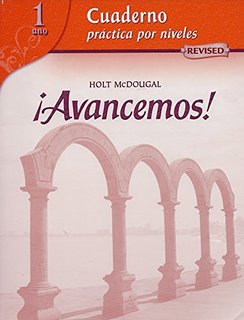
All Solutions
Page 142: Cultura A
Reading with comprehension.
In this exercise, there are statements about Puerto Rico. You will read them carefully and decide whether each is true or false. You will find all relevant information on pages 136, 162 and 170 in your manual. Below, you will find an analysis for each statement.
The capital of Puerto Rico is San José.
You have already learned that the Puerto Rican capital is San Juan. You can confirm this information by consulting the data on page 136 in your manual.
For this statement, turn to page 162. Read the short text at the bottom of the page. You will notice that is says the same as this statement, which means it is true.
Again, you have already learned that Puerto Rico uses the US dollar from page 136 in your manual. This statement is true.
Now, open your manual to page 170. Read the text about elections carefully to understand it. At the beginning, you will see that, indeed, Puerto Rico is a commonwealth of the US.
Keep reading the same text. You will notice that there are actually three political parties in Puerto Rico, which means that this statement is false.
The last statement refers to the same text. When you read the text, you noticed that the turnout was rather high, around 80%. This means the satement is false.
2. T
3. T
4. T
5. F
6. F
Reading with comprehension.
There are five statements about Puerto Rican and Peruvian culture in this exercise. You will read the statements carefully to understand them. Then, based on texts on pages 176 and 180-181 in your manual, you will choose the appropriate option for each statement. Below, you will find an analysis for each sentence.
The 15th birthday celebration for young women in P.to Rico is called _.
First, turn to pages 180-181 in your manual. Read the text about the 15th birthday celebrations in Puerto Rico and Peru. You will notice that they call them in a very similar way, but both cultures agree it is the quinceañera.
For this statement, go backwards and turn to page 176. Read the text about portraits. You will see that the author of “Goyitas” is Rafael Tufiño.
Keep on reading the same text. You will realise that Tufiño made a series of portraits of his mother.
In your manual, turn to page 180. Read the text again and note how Peruvian girls have 14-15 maids of honour, one for each previous birthday.
2. Rafael Tufiño
3. mother
4. maids of honour
She comes to the party wearing flats, and during the party, her father gives her high heels to put on, which symbolizes her stepping into adulthood.
– the group waltz;
– the father and daughter dance;
– the group fun dance.

